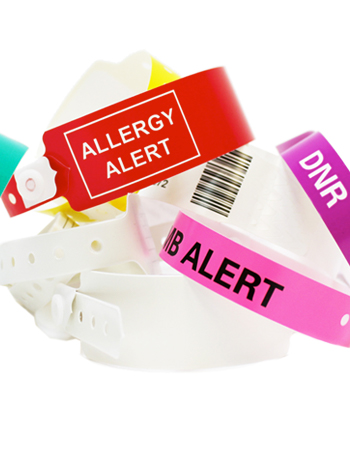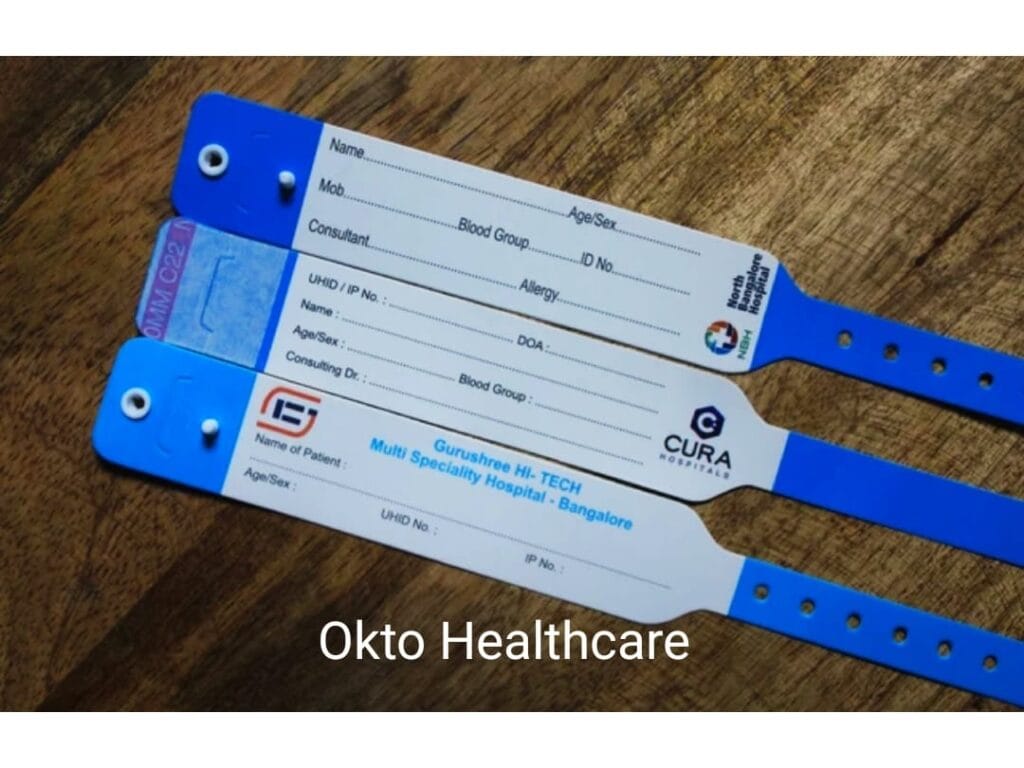Just How Patient Identification Band Aids Prevent Medical Errors and Mistakes
Just How Patient Identification Band Aids Prevent Medical Errors and Mistakes
Blog Article
Improving Patient Treatment With Efficient Identification Bands
The application of effective recognition bands is a pivotal element in improving patient treatment within health care setups. As the landscape of person identification develops, one have to consider the implications of these systems on general health care distribution and person end results.
Importance of Patient Identification
Making certain exact person recognition is essential in healthcare setups, as it straight impacts the safety and quality of care offered. Misidentification can bring about significant mistakes, consisting of administering the wrong medicine, carrying out inaccurate procedures, or miscommunicating important client information. Such errors not just jeopardize individual safety but can likewise result in legal ramifications and lowered count on medical care systems.
Reliable individual identification is essential to establishing a protected environment where people get customized and suitable care. It facilitates the exact paperwork of case histories, allergies, and therapy plans, guaranteeing that doctor have access to essential info in all times. Furthermore, durable identification procedures help simplify interaction among medical staff, improving partnership and reducing the threat of mistakes.

Kinds of Identification Bands
Identification bands play a critical function in maintaining precise person records and improving safety within medical care environments. Numerous types of identification bands are made use of to satisfy the particular demands and requirements of various client populaces.

One more kind is the ankle band, which is particularly valuable for babies and newborns, making certain that recognition remains undamaged even throughout care treatments. Specialized bands, such as those for allergic reaction notifies or drop risk signs, supply extra layers of safety and security by drawing prompt attention to crucial person conditions.
Recently, digital recognition bands have acquired appeal, including barcodes or RFID innovation that can be checked to promptly recover individual data. These bands improve process and decrease the risk of human error throughout person identification processes.
Benefits of Efficient Recognition
Reliable recognition of people through the use of recognition bands adds significantly to total client security and care high quality. By making certain that each person is precisely recognized, doctor can effectively match medical therapies and treatments to the proper person, minimizing the danger of errors. This is specifically important in environments with high client turnover, where the potential for misidentification is higher.
Moreover, effective recognition bands enhance interaction amongst healthcare teams. Accurate and clear client identification promotes partnership and guarantees that all staff member understand an individual's specific needs and case history. This interaction is crucial for providing worked with treatment, particularly in emergency scenarios where time is essential.

Eventually, effective identification with click here to read using identification bands not only safeguards individuals yet likewise promotes a society of safety and security within medical care centers (Patient Identification Band). By focusing on precise identification, healthcare organizations can improve end results and enhance the total person experience
Applying Identification Systems
While the importance of patient identification is well identified, the execution of durable recognition systems positions a complex obstacle for health care companies. Establishing reliable identification systems requires a comprehensive approach, incorporating innovation, personnel training, and procedure integration.
First, companies should select proper identification modern technologies, such as barcode scanning, RFID, or biometric systems. Patient Identification Band. These innovations ought to be reviewed based on price, functionality, and compatibility with existing facilities. A pilot program can aid determine potential problems prior to full-blown implementation
Next, comprehensive training for personnel is necessary. All personnel must recognize the importance of exact client recognition and be competent in using the chosen technologies. Routine training updates and analyses can enhance ideal techniques and make sure continued compliance.
Furthermore, healthcare companies need to establish standard procedures for individual recognition across all her latest blog departments, improving and decreasing discrepancies communication. Normal audits can aid recognize gaps in adherence to these procedures.

Eventually, a reliable execution of recognition systems not just improves person safety but also fosters a society of accountability and diligence within health care settings, making sure trustworthy and constant patient care.
Future Trends in Individual Identification
Innovations in modern technology are established to transform patient identification techniques in healthcare setups. The assimilation of biometric identification methods, such as fingerprinting and face recognition, is expected to boost precision and security. These modern technologies can dramatically minimize the risk of misidentification, ensuring that individuals obtain the correct treatments and drugs.
Furthermore, the application of blockchain technology for patient records is acquiring grip. This decentralized approach can provide a safe and secure and tamper-proof method for taking care of patient identities, consequently enhancing access to critical info throughout various medical care service providers.
One more trend is the enhancing usage of mobile health applications that utilize QR codes for patient recognition. These applications allow for real-time updates and easy access to person data, encouraging health care specialists to make educated decisions promptly.
Furthermore, expert system (AI) is positioned to play a vital role in examining patient recognition data, determining patterns, and anticipating prospective recognition errors before they take place.
As these technologies develop, they assure not only to boost this link patient safety however also to boost the overall performance of medical care shipment systems. Accepting these technologies will be essential for future-proofing person treatment practices.
Final Thought
In conclusion, efficient identification bands are important for boosting person safety and care quality within healthcare settings. By minimizing the risks connected with misidentification, these bands help with precise and timely info access, eventually enhancing communication among doctor. The implementation of robust identification systems not only promotes a culture of security but also placements medical care institutions to adjust to future patterns in individual identification technology, guaranteeing optimal outcomes for people in varied scientific atmospheres.
As the landscape of client identification advances, one need to take into consideration the effects of these systems on total health care distribution and individual outcomes.Efficient client identification is basic to establishing a protected environment where individuals receive appropriate and tailored treatment. Ultimately, prioritizing efficient client identification methods not only promotes a culture of safety and security however additionally contributes to enhanced patient end results and general complete satisfaction with health care services.
Reliable identification of people through the usage of recognition bands contributes substantially to total patient safety and security and care high quality. The execution of robust identification systems not just cultivates a culture of security yet also settings health care institutions to adapt to future patterns in person identification innovation, making sure optimal results for people in varied clinical environments.
Report this page